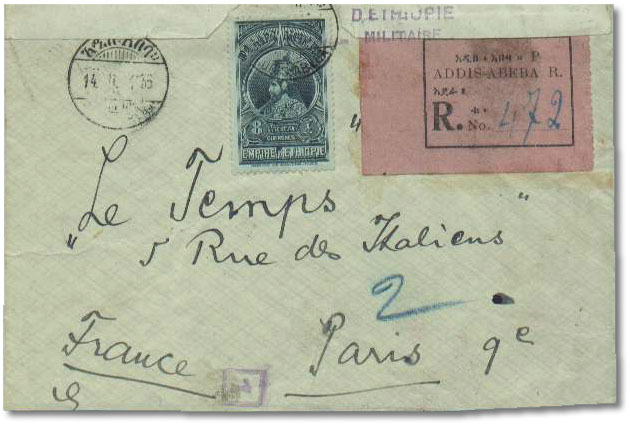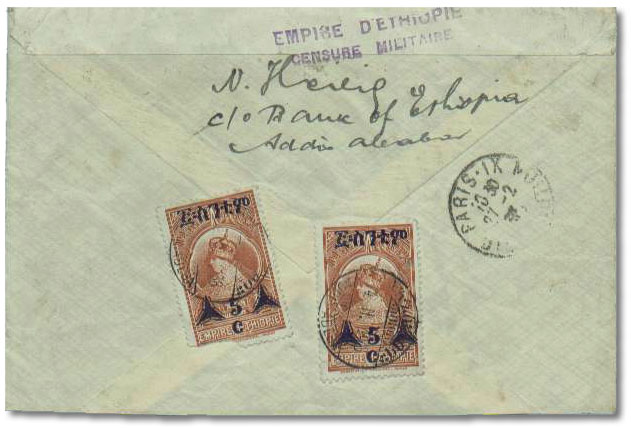INTRODUCTION
On October 3, 1935, Italy attacked Ethiopia from Eritrea and Italian Somaliland without a declaration of war. On October 7, the League of Nations unanimously declared Italy an aggressor but took no effective action.
In a war that lasted seven months, Ethiopia was outmatched by Italy in armaments - a situation exacerbated by the fact that a League of Nations arms embargo was not enforced against Italy. Despite a valiant defense, the next six months saw the Ethiopians pushed back on the northern front and in Harerge. Acting on long-standing grievances, a segment of the Tigray forces defected, as did Oromo forces in some areas. Moreover, the Italians made widespread use of chemical weapons and air power. On March 31, 1936, the Ethiopians counterattacked the main Italian force at Maychew but were defeated. By early April 1936, Italian forces had reached Dese in the north and Harer in the east. On May 2, Haile Selassie left for French Somaliland and exile - a move resented by some Ethiopians who were accustomed to a warrior emperor. The Italian forces entered Addis Ababa on May 5. Four days later, Italy announced the annexation of Ethiopia.
On June 30, Haile Selassie made a powerful speech before the League of Nations in Geneva in which he set forth two choices - support for collective security or international lawlessness. The emperor stirred the conscience of many and was thereafter regarded as a major international figure. Britain and France, however, soon recognized Italy's control of Ethiopia. Among the major powers, the United States and the Soviet Union refused to do so.
In early June 1936, Rome promulgated a constitution bringing Ethiopia, Eritrea, and Italian Somaliland together into a single administrative unit divided into six provinces. On June 11, 1936, Marshal Rodolfo Graziani replaced Marshal Pietro Badoglio, who had commanded the Italian forces in the war. In December the Italians declared the whole country to be pacified and under their effective control. Ethiopian resistance nevertheless continued.
After a failed assassination attempt against Graziani on February 19, 1937, the colonial authorities executed 30,000 persons, including about half of the younger, educated Ethiopian population. This harsh policy, however, did not pacify the country. In November 1937, Rome therefore appointed a new governor and instructed him to adopt a more flexible line. Accordingly, large-scale public works projects were undertaken. One result was the construction of the country's first system of improved roads. In the meantime, however, the Italians had decreed miscegenation to be illegal. Racial separation, including residential segregation, was enforced as thoroughly as possible. The Italians showed favoritism to non-Christian Oromo (some of whom had supported the invasion), Somali, and other Muslims in an attempt to isolate the Amhara, who supported Haile Selassie.
Ethiopian resistance continued, nonetheless. Early in 1938, a revolt broke out in Gojam led by the Committee of Unity and Collaboration, which was made up of some of the young, educated elite who had escaped the reprisal after the attempt on Graziani's life. In exile in Britain, the emperor sought to gain the support of the Western democracies for his cause but had little success until Italy entered World War II on the side of Germany in June 1940. Thereafter, Britain and the emperor sought to cooperate with Ethiopian and other indigenous forces in a campaign to dislodge the Italians from Ethiopia and from British Somaliland, which the Italians seized in August 1940, and to resist the Italian invasion of Sudan. Haile Selassie proceeded immediately to Khartoum, where he established closer liaison with both the British headquarters and the resistance forces within Ethiopia. |

